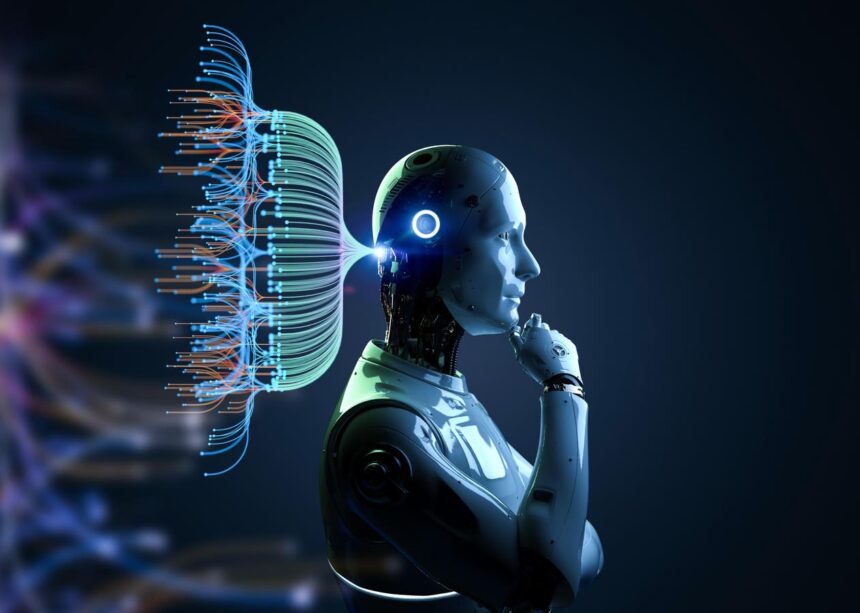Use 3D rendering artificial intelligence robots to perform automated data analysis and have big data digital visualization capabilities … [+]
We’ve been talking about transformers, leading edge neural network logic models, as a transformative technology, no pun intended, for some time now.
But now there are other competing methods for these attention mechanisms, which may further push the ability of artificial intelligence to achieve what people call AGI or artificial general intelligence, that is, artificial intelligence can perform better than humans in daily tasks.
to illustrate one of these new alternatives. I’ll be drawing heavily from Konstantin Rusch’s recent TEDxMIT talk, and getting some help from ChatGPT along the way to translate some of the more technical material into plain English.
Use an oscillatory state space model
“New models are all powered by transformers or liquid base models,” Rusch said. “But if I told you there was a completely new approach, a new artificial intelligence system that was more efficient, more expressive, more capable, you would What will happen?
Roush then explained the oscillatory state-space model, in which you take a mass-spring system, plot its position in time, and review what he calls “beautiful simple harmonic motion.”
This kind of thing is abundant in biological neuroscience, he says.
“If we look at a single biological neuron, the firing of an action potential is actually a relaxation oscillator of sorts,” he points out. “But even if you look at the entire network, we see the emergence of these oscillatory dynamics.”
He gave the example of the electroencephalogram, invented by Hans Berger in 1924.
“Can we somehow abstract away the essence and core idea of an oscillator and build an artificial intelligence system based on that?” he asked.
After reading it, I still don’t know much about the oscillatory state space model, so I asked ChatGPT to explain it in two simple paragraphs.
This is what I get:
“Imagine you are observing the rise and fall of spring, or tracking the rise and fall of temperatures over the seasons. An oscillatory state-space model is a mathematical tool that helps us describe and predict these types of back-and-forth patterns. It breaks down motion or change into “States”—hidden parts of a system that evolve over time—and show how they cycle in a regular, repetitive fashion. Rather than rising or falling steadily, these states swing like a pendulum, embodying the idea that something repeats itself over time. By using a state-space model, we can build equations to track what is happening inside the system (such as how stretched a spring is or how high or low the temperature might be), as well as what we can see or measure from the outside. When these equations describe recurring ups and downs, we call them oscillations. This approach can help us predict future behavior, such as figuring out when spring will reach its nadir or climate cycles will peak, so that we can plan or control things effectively, whether in engineering, economics, or even Brain research.
So this approach helps track what’s going on inside the system – not just things like springs, but maybe neural networks…
Emerging neural patterns
Roush went on to talk about how these systems mimic the human brain.
“We want the system to be very, very expressive, but it will also further bridge the link (and bridge) between artificial intelligence and biological intelligence,” he said.
By comparing oscillatory state space models with recurrent neural networks, he showed how relationships between weighted connections work and how “dense connections” exist in systems. He also elaborated on the principles of sparse representation. But it all adds up to one thing: faster, more powerful systems.
“If you have a standard cyclic model, the computation time is proportional to the sequence length,” he explains. “For our method, we can show that the computation time is actually proportional to log 2 of N. That’s a huge speedup.”
Use associated parallel scans
During his explanation, Rusch mentioned a term that helps understand how these models make things faster.
Likewise, if you ask ChatGPT, you’ll find that associative parallel scanning is a computational method that applies specific changes to each part of a sequence or matrix. The model tells us this succinctly:
“Imagine you have a list of numbers, such as the distance your car travels per hour on a road trip. Parallel scan can quickly calculate the running total for each hour (hour 1, hour 2, hour 3, etc.) by is to break the list into chunks and let each chunk do its own cumulative work. It then stitches the chunks together into a final list that shows the total distance you’ve traveled at each step in the process. . Because this happens in parallel, it’s much faster than having a single processor perform each step at once.
This helps explain some of the math behind these concepts, but by the end of the talk, Rusch went into very different territory.
Versatility and mission robots
Universality essentially means that a Turing machine can complete the work of other Turing machines in a unified capability field theory.
Rouch mentioned this idea when transitioning from experimental materials to actual laboratory experiments.
“We trained a humanoid robot in the lab to perform some kitchen chores,” he explains. “Oscillatory dynamics emerge…physically meaningful representations that are very close to human trajectories.”
This in itself provides solutions to some of the biggest challenges noted in modern robotics.
The argument usually goes something like this – yes, AI is very smart at processing information and creating things, but what about physical flexibility?
Many people have misunderstandings about how to embed artificial intelligence into robots to imitate human movements. This starts with detailing how it works, so you’ll have robots capable of doing manual tasks in exclusively human areas that we all take for granted – washing dishes, taking out the trash or taking care of humans, hygiene and other personal care. All of this, or use whatever you have in the refrigerator to cook your favorite meals.
In a way, this is the last jump we haven’t seen yet. Our computers are very smart but have no physical bodies. I want to assure you that all of this will change soon.











